Table of Contents
Yongin–Gwacheon underground highway project, selected for feasibility study
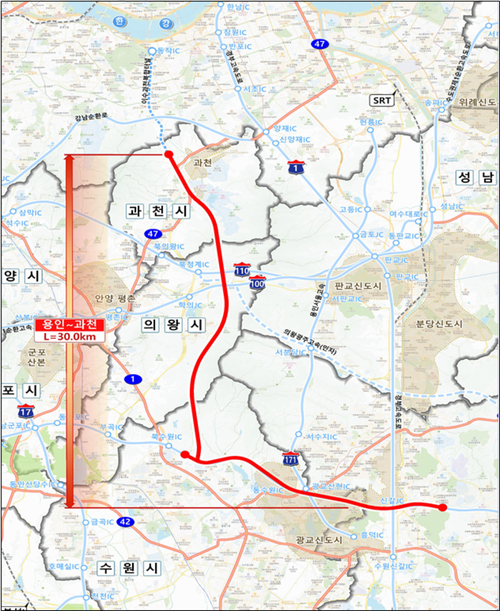
The Yongin–Gwacheon underground highway project connecting Eonnam-dong in Yongin and Gwacheon-dong in Gwacheon has passed the Ministry of Economy and Finance's 8th Financial Project Evaluation Committee review. As a result, it has been selected for a feasibility study. This decision is expected to be a crucial opportunity in resolving the traffic network issues in the southern metropolitan area.
Overview of the Yongin–Gwacheon underground highway project
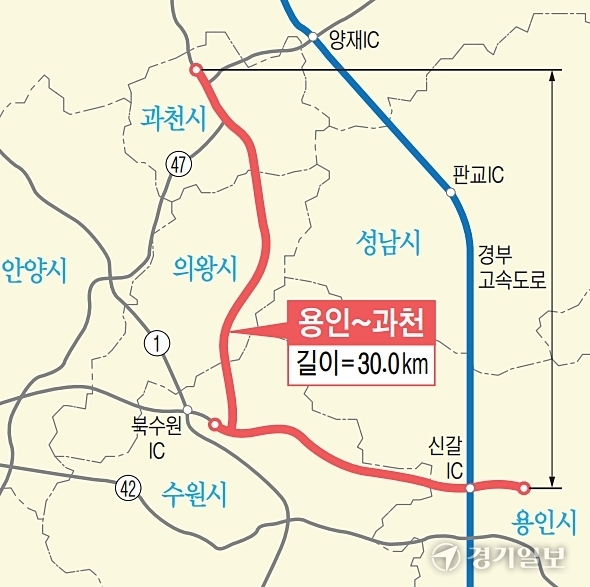
This project is a plan to construct a new 30.0 km long four-lane highway, with 21.1 km of this highway planned to be constructed as an underground tunnel. The estimated cost required for this project is about 2.7576 trillion won.
The specific route starts from Eonnam-dong in Yongin and connects to Gwacheon-dong in Gwacheon. This project will proceed with four lanes in both directions and will include an underground tunnel, and substantial investments are planned.

This route is divided into two segments. The first segment, from Yongin to Suwon, aims to install an underground highway beneath the Yeongdong Expressway to address frequent congestion issues. The second segment, from Suwon to Gwacheon, will establish a new north-south highway connecting to Seoul's 'Isu-Gwacheon Complex Tunnel.'
Expected Relief from Traffic Issues in the Metropolitan Area
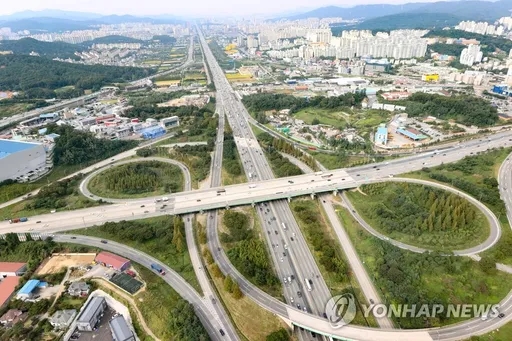
Currently, the area from Singa JCT on the Yeongdong Expressway to BukSuwon IC sees an average of 180,000 vehicles per day, significantly exceeding the optimal traffic volume of 135,000 vehicles. This causes severe traffic congestion during commuting hours, particularly affecting residents in Suwon.
However, once the Yongin–Gwacheon underground highway opens, various positive changes are anticipated. First, it is expected to significantly reduce travel time from the southern Gyeonggi area, such as Suwon and Yongin, to Gwacheon and downtown Seoul. Additionally, the chronic congestion issues on the Yeongdong Line are expected to be alleviated to some extent.
Ultimately, a new direct transportation corridor connecting southern Gyeonggi and central Seoul will be established, creating a smoother transportation environment. These changes are expected to bring numerous benefits to local residents.
Progress and Expected Effects of the Project
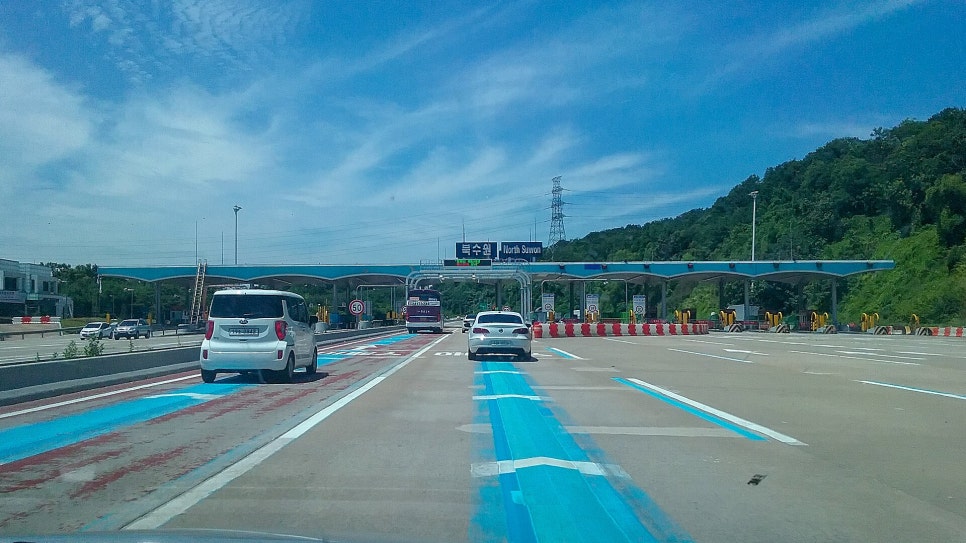
This project is already included in the 2nd National Road Network Comprehensive Plan announced in 2021 and the 2nd Expressway Construction Plan of 2022.
However, since it requires a substantial budget, economic feasibility assessment is essential, and passing the feasibility study has increased the likelihood of the project's realization.
The Yongin–Gwacheon underground highway project is expected to be at the center of innovative changes to the metropolitan traffic network, rather than merely an expansion of the road.
In terms of traffic, it is expected to shorten travel times from southern Gyeonggi to downtown Seoul and contribute to relieving congestion on the Yeongdong Line.
Economically, it will enhance logistics efficiency and improve access to industrial complexes in southern Gyeonggi.
Environmentally, the underground construction is expected to reduce air pollution and noise, resulting in positive effects. Lastly, it is anticipated that citizens' commuting environments will improve, and the formation of metropolitan living zones will accelerate.
Conclusion
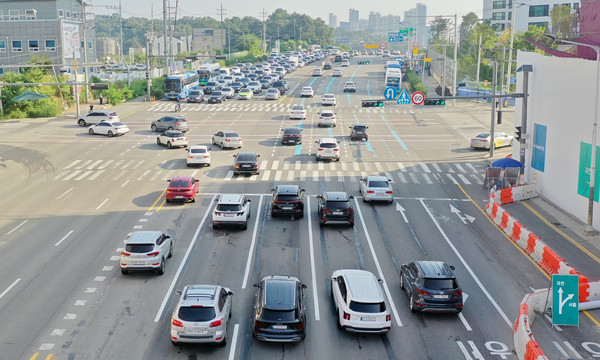
The Yongin–Gwacheon underground highway, recently selected for a feasibility study, will now move on to the verification and design stages. If this project is finalized and proceeded with, it is expected to significantly resolve traffic congestion issues for residents in southern Gyeonggi areas like Suwon and Yongin, while greatly improving accessibility to Seoul.
The Gyeonggi Province and related local governments plan to work closely with the central government to ensure the smooth progression of subsequent procedures. This project is expected to be a significant opportunity to fundamentally change the traffic infrastructure in the southern metropolitan area.
#YonginGwacheonUndergroundHighway, #FeasibilityStudy, #YonginEonnamDong, #GwacheonGwacheonDong, #YonginSuwonGwacheon, #IsuGwacheonComplexTunnel, #YeongdongExpresswayCongestionRelief, #SuwonTrafficIssues, #SouthernGyeonggiTrafficNetwork, #SeoulCityCenterConnection, #GyeonggiProvinceRoadPlan, #8thFinancialProjectEvaluationCommittee, #MetropolitanTrafficNetwork, #YonginTraffic, #SuwonTraffic, #GwacheonTraffic, #ExpandingMetropolitanTrafficNetwork, #UndergroundHighway, #NorthernSouthernAxis, #TravelTimeReduction, #CommuteTrafficImprovement, #NewRoadConstruction, #SouthernGyeonggiResidentWishes, #MetropolitanTrafficPolicy, #GyeonggiProvinceRoadConstruction, #ImprovedSeoulAccessibility, #YonginSuwonSeoulConnection, #EconomicFeasibilityVerification, #MetropolitanTrafficInfrastructure, #2025FeasibilityStudy
Frequently Asked Questions (FAQ)
Q. What is the reason for the selection of the Yongin–Gwacheon underground highway project for the feasibility study?
This project was selected for the feasibility study to resolve traffic issues in southern metropolitan area.
The Yongin–Gwacheon underground highway project is an important infrastructure expansion project connecting Yongin City and Gwacheon City. It has been planned with the purpose of fundamentally resolving traffic network issues in the southern metropolitan area, passing the Ministry of Economy and Finance's 8th Financial Project Evaluation Committee review to be selected for the feasibility study. Through this, the project's feasibility and viability will be thoroughly validated, enhancing its realization potential.
Q. What are the key details of the Yongin–Gwacheon underground highway project?
It is a plan to construct a 30 km four-lane highway, including a 21.1 km underground tunnel.
This project is to newly construct a four-lane highway of 30.0 km in total length from Eonnam-dong in Yongin to Gwacheon-dong in Gwacheon. Of this, a 21.1 km section is planned to be constructed in the form of an underground tunnel, with a total project cost estimated at about 2.7576 trillion won. The highway is designed to aim at alleviating traffic congestion in the southern metropolitan area and creating a fast travel environment.
Q. What traffic effects are expected from the Yongin–Gwacheon underground highway?
Traffic congestion relief and improved accessibility to downtown Seoul will significantly enhance traffic in the southern metropolitan area.
With the opening of this highway, the chronic congestion issues on the Yeongdong Expressway will be alleviated and commuting times for residents in Suwon and Yongin will be greatly reduced. Additionally, the formation of a north-south traffic corridor associated with Seoul's Isu-Gwacheon Complex Tunnel will facilitate movement between southern Gyeonggi and downtown Seoul. These improvements will have a positive impact on the formation of metropolitan living zones and economic revitalization.
Q. What is the progress and plan for the Yongin–Gwacheon underground highway project?
It is included in the 2021 National Road Network Comprehensive Plan, has passed the feasibility study, and is currently in the design phase.
This project is being carried out as part of the 2nd National Road Network Comprehensive Plan and the 2nd Expressway Construction Plan reflected in 2021. Recently, it was selected for the feasibility study, completing the economic verification, and is currently following design and verification procedures. Gyeonggi Province and related local governments plan to cooperate with the central government to facilitate the subsequent procedures smoothly.
Q. What are the expected effects of the Yongin–Gwacheon underground highway on the local community?
Beyond traffic improvements, it is expected to contribute to environmental enhancement and regional economic revitalization.
The construction of the underground highway is anticipated to reduce air pollution and noise, leading to environmental benefits. Additionally, logistics efficiency will increase and accessibility to industrial complexes in southern Gyeonggi will improve, supporting regional economic revitalization. The commuting environment for citizens is expected to enhance, and the formation of metropolitan living zones will be accelerated, having a positive impact on the overall society.